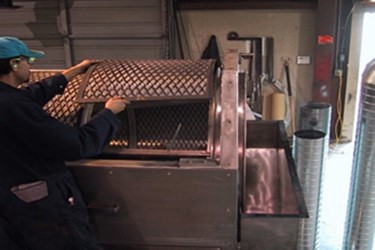Sludge Thickeners: The Good, The Bad, And The Smelly

Management of wastewater sludge is a core responsibility of treatment plant operators. With this responsibility comes common challenges that must be overcome. These include controlling odors so as to have a minimal impact on the surrounding community and minimizing hauling costs for its disposal. Getting a handle on both of these responsibilities and more can be much easier with the proper sludge-thickening equipment.
There are three widely used sludge-thickening technologies in wastewater treatment: gravity belt presses, centrifuges, and rotary drums. With gravity belt presses, sludge passes over a porous filter belt and solids settle out of the bottom of the tank. Centrifuges are high-speed cylinders that spin to separate the water and solids. Rotary drum thickeners spin at lower speeds and allow sludge to pass through filter screens.
Size of the facility, budget, and other factors need to be considered when selecting the proper equipment for sludge thickening. For many wastewater treatment plants, rotary drum thickeners will float to the top as an optimal solution.
Get unlimited access to:
Enter your credentials below to log in. Not yet a member of Water Online? Subscribe today.
